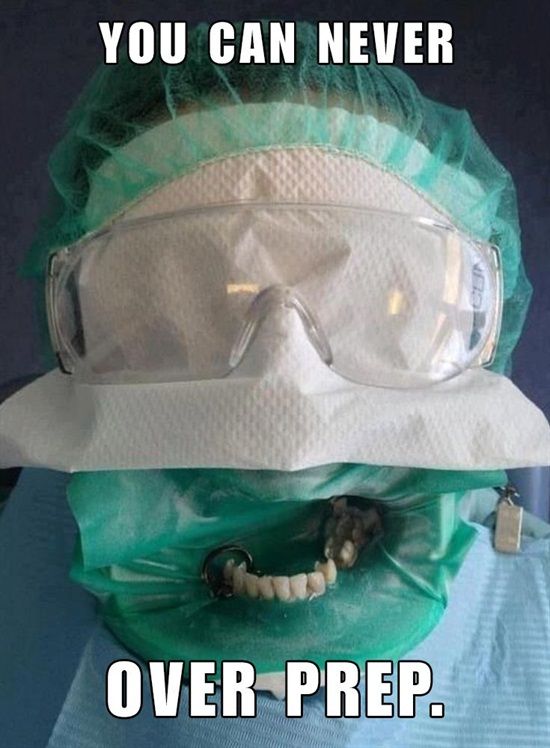
Found this on The Internets and thought it’d be appropriate to share some dental humor. (I do not claim ownership of the photo.) But here’s your friendly holistic dentist PSA: take mercury seriously!
Dr. Boyajian, Los Angeles

Found this on The Internets and thought it’d be appropriate to share some dental humor. (I do not claim ownership of the photo.) But here’s your friendly holistic dentist PSA: take mercury seriously!
Dr. Boyajian, Los Angeles
Installing or removing amalgam (a.k.a. “silver” or metal) cavity fillings is never, ever recommended while pregnant or breastfeeding. In my book, amalgam should never be installed in the first place, but should certainly be removed as soon as possible. When a developing infant is depending on its mother for nourishment, however, mercury removal is a bad idea.
When amalgam is installed or removed, a spike of mercury is ingested through the mouth, nose, or skin, released into the bloodstream and soft tissues of the body, and then stored in fatty tissue — fatty tissue not only meaning stored body fat, but mostly in the brain and various glands and organs that rely on fat/cholesterol to function properly. This is why you hear primarily about severe nervous or endocrine conditions caused by mercury poisoning, though other symptoms of mercury toxicity run the gamut from random minor complaints to chronic illness. Symptoms may seem completely unrelated, making it difficult to diagnose. But it is definitely there if you’ve been exposed to it, whether or not you “feel” poisoned by it.
With that knowledge, you can imagine how vulnerable a growing baby would be to the mother’s mercury exposure. Conventional dentistry and its literature may tell you otherwise. They say there is little to no significant risk or imminent danger. Many patients testify to having mouths just full of metal or having it installed/removed during pregnancy but deliver and raise kids who are perfectly normal. Let me put it flatly: they do not know what they are talking about. Again, mercury poisoning’s symptoms will not always be obvious. If that stuff is in your body, it will affect you or your offspring. It could be random headaches. It could be infertility or other hormonal discomforts. It could be sluggishness, foggy thinking, or the inability to lose weight. It could be autism or ADHD or another neurological disorder. These problems certainly aren’t getting better in our country, and the number of children developing these problems is steadily increasing, not decreasing! Is it possible this “harmless” amalgam has anything to do with it?
All this to say, causing further disruption to amalgam dental work would be very dangerous for both mom and baby. It is key to have all mercury safely removed from your teeth before conceiving. Don’t wait until pregnancy — planned or not — to care for your health in this important (but too often overlooked) way. Either take care of it now before conceiving, or wait until after weaning when you can have it removed and safely detox without worrying about passing on the poison to your child.
The only ways we’re going to keep having healthy babies and pregnancies is by thinking ahead, thinking critically, staying informed, and applying what we learn.
Dr. Boyajian, West Los Angeles
www.dentalwellnessarts.com
Happy New Year, everybody!
No matter what your dental hygienic history is, there is always room to improve upon how you care for your teeth and overall health. If you’re setting any goals for this year, why not add a manageable habit to your daily dental care? Not that I intend to sound cliche, but since getting a fresh start is the prevailing attitude this week, I’m going to take advantage of it.
Incorporate these small habits that yield big improvements:
You might even set goals that are a little more major in that they require more time and money. The long-term investment pays off greatly, however. Why not:
So how are you going to take better care of your teeth this year?
Dr. Boyajian, West Los Angeles
www.dentalwellnessarts.com
*You can ask me about the hygienic and natural dental care products I supply.
Since it’s likely that the mercury levels in your body will quickly spike as your amalgam fillings are removed, you should consider paying special attention to your health (nutrition and diet, in particular) in order to supply your body with the best ammo for serious detoxing. I have the ability to refer you to nutritionists and health specialists. Pregnant/nursing mothers should not get the procedure done until they are neither pregnant (or trying to be) nor nursing. Those with known sensitivities to mercury should consult a doctor knowledgeable about mercury and its effects on the human body before attempting the removal.
Take special care of your diet before and after the procedure to help your tissues detox. Also pay attention to your physical health and alert your physician and/or dentist about anything negatively out of the ordinary.
As you can see, this is serious stuff! Mercury poisoning is no frivolous matter. Here are a few helpful links with content directed towards patients about the whys and wherefores of mercury and removing it.
http://iaomt.org/patients/index.asp
http://dentalwellness4u.com/breaking/breaking.html
Dr. Boyajian, West Los Angeles
www.dentalwellnessarts.com
Once you’ve decided to have the mercury in your mouth removed and replaced, some important precautions need to be taken:
In the next post, I’ll go over what should happen after mercury is removed.
Dr. Boyajian, West Los Angeles
www.dentalwellnessarts.com